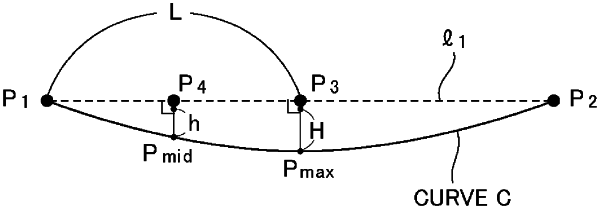| CPC H05K 7/2039 (2013.01) [B28B 3/025 (2013.01); C04B 35/575 (2013.01); C04B 41/4523 (2013.01); C04B 41/5155 (2013.01); C04B 41/88 (2013.01); C09K 5/14 (2013.01); F28F 21/04 (2013.01); F28F 21/089 (2013.01); C04B 2235/3418 (2013.01); C04B 2235/3826 (2013.01); F28F 2215/04 (2013.01); F28F 2215/10 (2013.01)] | 8 Claims |

|
1. A plate-shaped heat dissipation member comprising a metal-silicon carbide composite containing aluminum or magnesium,
wherein the heat dissipation member is substantially rectangular,
among two main surfaces of the heat dissipation member, one main surface is curved to be convex in an outward direction of the heat dissipation member and the other main surface is curved to be convex in an inward direction of the heat dissipation member, and in a curve C of the other main surface in a cross-sectional view of the heat dissipation member showing a cross-section that is substantially perpendicular to the heat dissipation member and passes both middle points of two short sides of the other main surface,
when a straight line passing through both endpoints P1 and P2 of the curve C is represented by l1,
a point at which a distance to l1 on the curve C is maximum is represented by Pmax,
an intersection point between l1 and a perpendicular drawn from Pmax to l1 is represented by P3,
a middle point of a line segment P1P3 is represented by P4,
an intersection point between the curve C and a straight line that passes through P4 and is perpendicular to l1 is represented by Pmid, and
a length of the line segment P1P3 is represented by L, a length of a line segment P3Pmax is represented by H, and a length of a line segment P4Pmid is represented by h, (2h/L)/(H/L) is 1.1 or more, and
wherein the curvature of a center portion of the other main surface is smaller than that of a portion distant from the center portion of the other main surface.
|